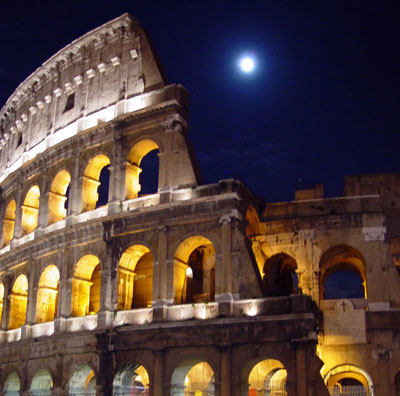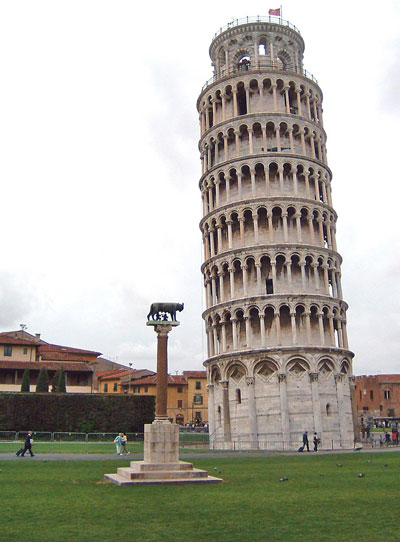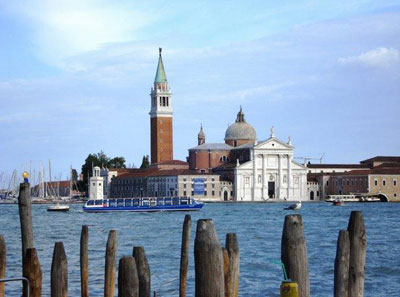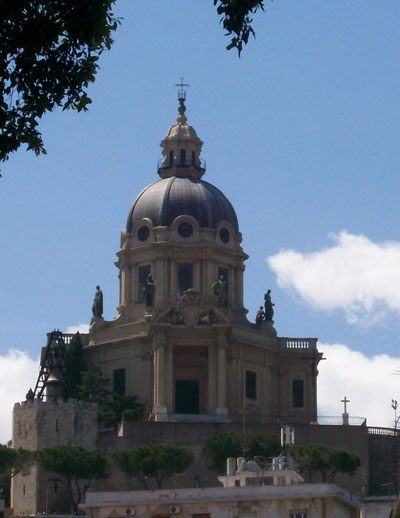
| HOME |
| INDEX ARTICLES |
| CONTACT US |
|
Italy: Excerpts from the CIA World Factbook
![]()
Background:
Italy became a nation-state in 1861 when the regional states of the peninsula, along with Sardinia and Sicily, were united under King Victor EMMANUEL II. An era of parliamentary government came to a close in the early  1920s when Benito MUSSOLINI established a Fascist dictatorship. His alliance with Nazi Germany led to Italy's defeat in World War II. A democratic republic replaced the monarchy in 1946 and economic revivalfollowed. Italy was a charter member of NATO and the European Economic Community (EEC). It has been at the forefront of European economic and political unification, joining the Economic and Monetary Union in 1999. Persistent problems include illegal immigration, organized crime, corruption, high unemployment, sluggish economic growth, and the low incomes and technical standards of southern Italy compared with the prosperous north.
1920s when Benito MUSSOLINI established a Fascist dictatorship. His alliance with Nazi Germany led to Italy's defeat in World War II. A democratic republic replaced the monarchy in 1946 and economic revivalfollowed. Italy was a charter member of NATO and the European Economic Community (EEC). It has been at the forefront of European economic and political unification, joining the Economic and Monetary Union in 1999. Persistent problems include illegal immigration, organized crime, corruption, high unemployment, sluggish economic growth, and the low incomes and technical standards of southern Italy compared with the prosperous north.
Environment -
current issues:
air pollution from industrial emissions such as sulfur dioxide; coastal and inland rivers polluted from industrial and agricultural effluents; acid rain damaging lakes; inadequate industrial waste treatment and disposal facilities
Environment - international agreements:
party to: Air Pollution, Air Pollution-Nitrogen Oxides, Air Pollution-Persistent Organic Pollutants, Air Pollution-Sulfur 85, Air Pollution-Sulfur 94, Air Pollution-Volatile Organic Compounds, Antarctic-Environmental Protocol, Antarctic-Marine Living Resources, Antarctic Seals, Antarctic Treaty, Biodiversity, Climate Change, Climate Change-Kyoto Protocol, Desertification, Endangered Species, Environmental Modification, Hazardous Wastes, Law of the Sea, Marine Dumping, Ozone Layer Protection, Ship Pollution, Tropical Timber 83, Tropical Timber 94, Wetlands, Whaling
signed, but not ratified: none of the selected agreements
People

Population: 58,090,681 (July 2010 est.)
Population growth rate: -0.075% (2010 est.)
Religions: Roman Catholic 90% (approximately; about one-third practicing), other 10% (includes mature Protestant and Jewish communities and a growing Muslim immigrant community)
Government
Country name:
conventional long form: Italian Republic
conventional short form: Italy
local long form: Repubblica Italiana
local short form: Italia
former: Kingdom of Italy
Government type: republic
Administrative divisions:
15 regions (regioni, singular - regione) and 5 autonomous regions (regioni autonome, singular - regione autonoma)
regions: Abruzzo, Basilicata, Calabria, Campania, Emilia-Romagna, Lazio (Latium), Liguria, Lombardia, Marche, Molise, Piemonte (Piedmont), Puglia (Apulia), Toscana (Tuscany), Umbria, Veneto (Venetia)
autonomous regions: Friuli-Venezia Giulia; Sardegna (Sardinia); Sicilia (Sicily); Trentino-South Tyrol, also known as Trentino-Alto Adige (Italian), Trentino-Suedtirol (German); Aosta Valley, also known as Valle d'Aosta (Italian), Vallee d'Aoste (French)
Independence: 17 March 1861 (Kingdom of Italy proclaimed; Italy was not finally unified until 1870)
National holiday: Republic Day, 2 June (1946)
Constitution: passed 11 December 1947, effective 1 January 1948; amended many times
Legal system:
based on civil law system; appeals treated as new trials; judicial review under certain conditions in Constitutional Court; has not accepted compulsory ICJ jurisdiction
Executive branch:
chief of state: President Giorgio NAPOLITANO (since 15 May 2006)
head of government: Prime Minister Silvio BERLUSCONI (since 8 May 2008) note - in Italy the prime minister is referred to as the president of the Council of Ministers
cabinet: Council of Ministers proposed by the prime minister and nominated by the president
elections: president elected by an electoral college consisting of both houses of parliament and 58 regional representatives for a seven-year term (no term limits); election last held on 10 May 2006 (next to be held in May 2013); prime minister appointed by the president and confirmed by parliament
election results: Giorgio NAPOLITANO elected president on the fourth round of voting; electoral college vote - 543
Legislative branch:
bicameral Parliament or Parlamento consists of the Senate or Senato della Repubblica (315 seats; members elected by proportional vote with the winning coalition in each region receiving 55% of seats from that region; members to serve five-year terms; and up to 5 senators for life appointed by the president of the Republic) and the Chamber of Deputies or Camera dei Deputati (630 seats; members elected by popular vote with the winning national coalition receiving 54% of chamber seats; members to serve five-year terms); note - it has not been clarified if each president has the power to designate up to five senators or if five is the number of senators for life who might sit in the Senate
elections: Senate - last held on 13-14 April 2008 (next to be held in April 2013); Chamber of Deputies - last held on 13-14 April 2008 (next to be held in April 2013)
election results: Senate - percent of vote by party - NA; seats by party - S. BERLUSCONI coalition 174 (PdL 147, LN 25, MpA 2), W. VELTRONI coalition 132 (PD 118, IdV 3), UdC 3, other 6; Chamber of Deputies - percent of vote by party - NA; seats by party - S. BERLUSCONI coalition 344 (PdL 276, LN 60, MpA 8), W. VELTRONI coalition 246 (PD 217, IdV 29), UdC 36, other 4
Judicial branch:
Constitutional Court or Corte Costituzionale (composed of 15 judges: one-third appointed by the president, one-third elected by parliament, one-third elected by the ordinary and administrative Supreme Courts)
Political parties and leaders:
Silvio BERLUSCONI coalition: Lega Nord or LN [Umberto BOSSI]; Movement for Autonomy or MpA [Raffaele LOMBARDO]; People of Freedom or PdL [Silvio BERLUSCONI]
W. VELTRONI coalition: Democratic Party or PD [Pier Luigi BERSANI]; Italy of Values or IdV [Antonio DI PIETRO]
other non-allied parties: Union of the Center or UdC [Pier Ferdinando CASINI]
 Political pressure groups and leaders:
Political pressure groups and leaders:
manufacturers and merchants associations - Confcommercio; Confindustria; organized farm groups - Confcoltivatori; Confagricoltura; Roman Catholic Church; three major trade union confederations - Confederazione Generale Italiana del Lavoro or CGIL [Guglielmo EPIFANI] which is left wing; Confederazione Italiana dei Sindacati Lavoratori or CISL [Raffaele BONANNO], which is Roman Catholic centrist; Unione Italiana del Lavoro or UIL [Luigi ANGELETTI] which is lay centrist)
International organization participation:
ADB (nonregional member), AfDB (nonregional member), Arctic Council (observer), Australia Group, BIS, BSEC (observer), CBSS (observer), CD, CDB, CE, CEI, CERN, EAPC, EBRD, EIB, EMU, ESA, EU, FAO, FATF, G-20, G-7, G-8, G-10, IADB, IAEA, IBRD, ICAO, ICC, ICCt, ICRM, IDA, IEA, IFAD, IFC, IFRCS, IHO, ILO, IMF, IMO, IMSO, Interpol, IOC, IOM, IPU, ISO, ITSO, ITU, ITUC, LAIA (observer), MIGA, MINURSO, NATO, NEA, NSG, OAS (observer), OECD, OPCW, OSCE, Paris Club, PCA, PIF (partner), Schengen Convention, SECI (observer), SICA (observer), UN, UNAMID, UNCTAD, UNESCO, UNHCR, UNIDO, UNIFIL, Union Latina, UNMOGIP, UNRWA, UNTSO, UNWTO, UPU, WCO, WFTU, WHO, WIPO, WMO, WTO, ZC
Economy:
Economy - overview:
Italy has a diversified industrial economy, which is divided into a developed industrial north, dominated by private companies, and a less-developed, welfare-dependent, agricultural south, with high unemployment. The Italian economy is driven in large part by the manufacture of high-quality consumer goods produced by small and medium-sized enterprises, many of them family owned. Italy also has a sizable underground economy, which by some estimates accounts for as much as 15% of GDP. These activities are most common within the agriculture, construction, and service sectors. Italy has moved slowly on implementing needed structural reforms, such as reducing graft, overhauling costly entitlement programs, and increasing employment opportunities for young workers, particularly women. These conditions will be exacerbated in the near-term by the global economic downturn, but in the longer-term Italy's low fertility rate and quota-driven immigration policies will increasingly strain its economy. The Italian government has struggled to limit government spending, but Italy's exceedingly high public debt remains above 115% of GDP, and its fiscal deficit - just 1.5% of GDP in 2007 - exceeded 5% in 2009 as the costs of servicing the country's debt rose. A tax amnesty program implemented in late 2009 to repatriate untaxed assets held abroad has netted the federal government more than $135 billion.
 Exports - partners:
Exports - partners:
Germany 12.7%, France 11.2%, Spain 6.5%, US 6.2%, UK 5.2% (2008)
Imports - partners:
Germany 15.9%, France 8.5%, China 6.2%, Netherlands 5.3%, Libya 4.6%, Russia 4.2% (2008)
Military:
Military branches:
Italian Armed Forces: Italian Army (Esercito Italiano, EI), Italian Navy (Marina Militare Italiana, MMI), Italian Air Force (Aeronautica Militare Italiana, AMI), Carabinieri Corps (Arma dei Carabinieri, CC) (2010)
Military service age and obligation:
18-27 year of age for voluntary military service; conscription abolished January 2005; women may serve in any military branch; 10-month service obligation, with a reserve obligation to age 45 (Army and Air Force) or 39 (Navy) (2006)
Transnational Issues:
Disputes - international:
Italy's long coastline and developed economy entices tens of thousands of illegal immigrants from southeastern Europe and northern Africa
Illicit drugs:
important gateway for and consumer of Latin American cocaine and Southwest Asian heroin entering the European market; money laundering by organized crime and from smuggling
Updated: 31.05.2010
|CiaoAmerica.net|